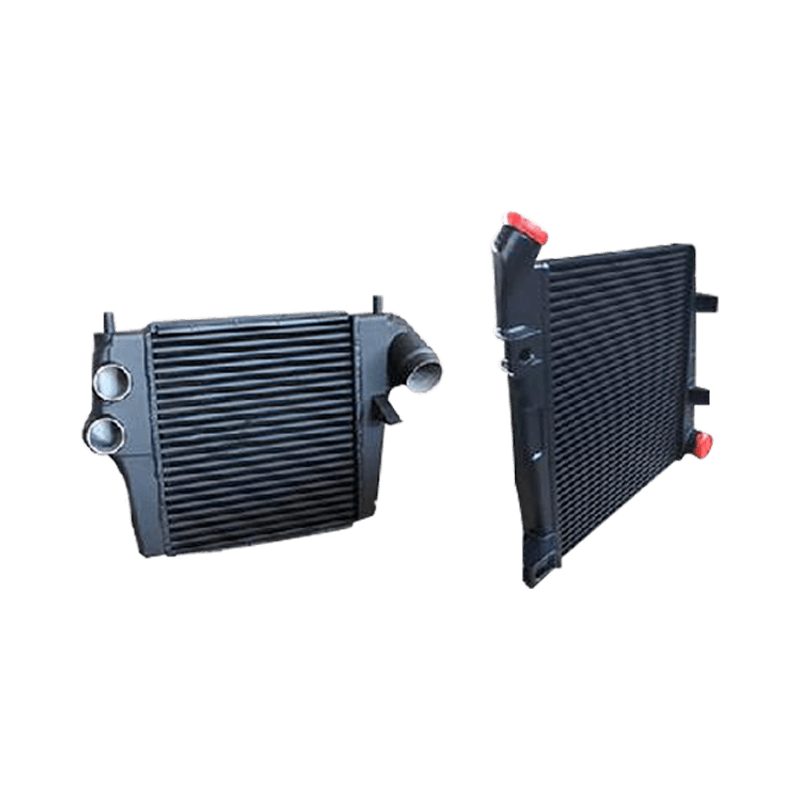 +86-13812067828
+86-13812067828
In the competitive world of automotive engineering, material selection plays a decisive role in determining the efficiency, longevity, and cost-effectiveness of automotive mechanical heat exchangers. These components—found in radiators, intercoolers, condensers, and oil coolers—must perform consistently under thermal stress, chemical exposure, and mechanical vibration. Choosing the right material is not a simple matter of thermal conductivity; it also involves balancing weight, corrosion resistance, formability, and economic feasibility, all of which contribute directly to vehicle performance and lifecycle cost.
Aluminum has become the dominant material in most automotive heat exchanger applications, primarily due to its excellent heat transfer properties, low weight, and adaptability to modern manufacturing techniques such as vacuum brazing. Its corrosion resistance, especially when combined with protective coatings, makes it highly suitable for under-the-hood environments where exposure to moisture, salts, and thermal cycling is constant. Aluminum also supports complex design geometries, allowing manufacturers to reduce size and weight without sacrificing performance—a key advantage in meeting ever-tightening fuel efficiency and emissions regulations.
However, copper and its alloys continue to hold value in specific use cases. Copper’s superior thermal conductivity—nearly twice that of aluminum—can offer enhanced heat dissipation in compact applications where space is limited but cooling demand is high. In heavy-duty or industrial vehicles, where the primary concern is robust thermal management rather than weight reduction, copper-based heat exchangers can offer increased reliability. These materials are also favored in some markets for their recyclability and long-term durability, particularly when long service life and minimal maintenance are required.
While material properties are essential, compatibility with joining methods is equally critical in heat exchanger manufacturing. For example, copper and brass units are often assembled using soldering or brazing, techniques well-suited to thicker materials and field repair. Aluminum, on the other hand, requires more precise and automated processes, which are often integrated into high-volume production lines. This distinction influences not just production cost but also repairability in the aftermarket, a factor that fleet operators and OEMs alike must consider when specifying components.

In recent years, composite materials and hybrid metal-polymer structures have also been explored for heat exchanger applications. While still in developmental stages for mainstream use, these innovations aim to combine the lightweight benefits of polymers with the heat transfer and strength characteristics of metals. Although not yet widely adopted, they point to the industry’s continued push for cost-effective thermal solutions tailored to new vehicle architectures, including electric and hybrid powertrains, where thermal management requirements are rapidly evolving.
From an engineering standpoint, selecting materials for automotive mechanical heat exchangers is never a one-size-fits-all decision. Every application—from compact urban vehicles to high-load commercial trucks—brings unique thermal loads, spatial constraints, and environmental conditions. As a manufacturer with industry-proven experience, we work closely with our partners to match material properties with performance requirements, ensuring each solution not only meets current demands but is also scalable for future technologies.
Ultimately, the material foundation of a automotive heat exchanger is what enables it to perform reliably in some of the harshest environments found in modern vehicles. By staying at the forefront of metallurgical developments and production technologies, we help our customers achieve the ideal balance of performance, durability, and cost across a wide range of automotive thermal applications. For businesses seeking reliable and efficient heat exchanger solutions, understanding the material science behind each component is the first step toward smarter vehicle design.